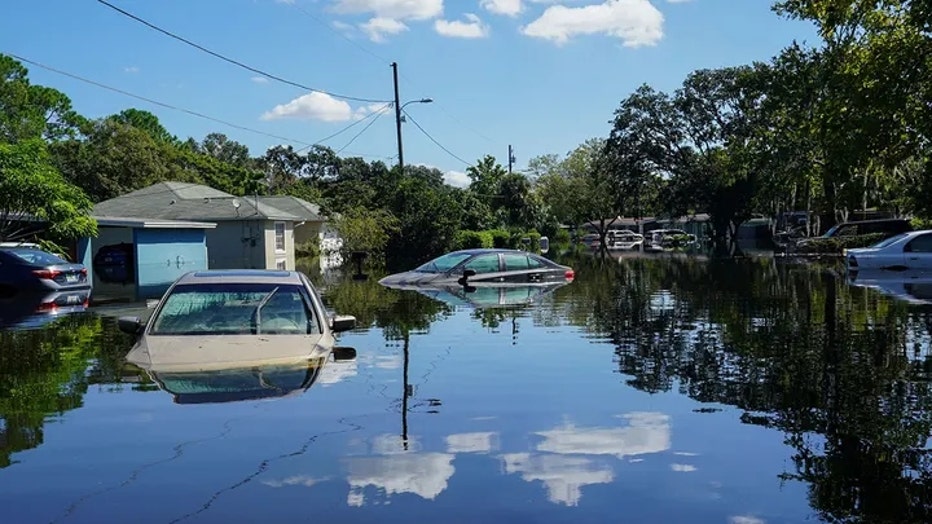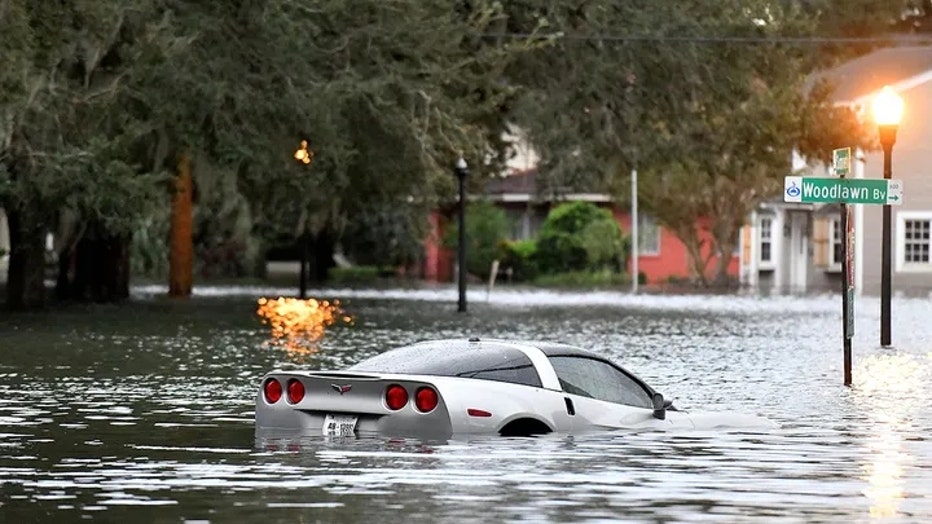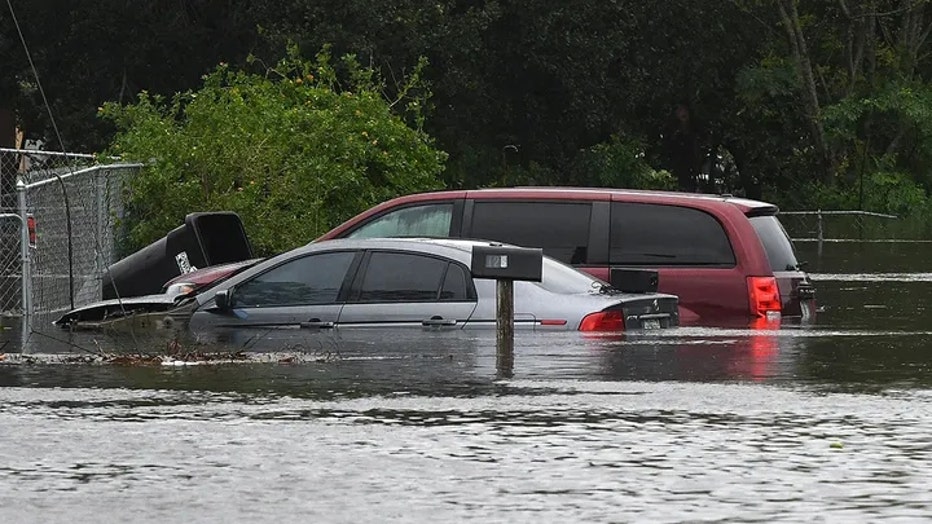Flood-damaged cars from Hurricane Ian may soon appear in Illinois, AG warns
CHICAGO - Thousands of cars and trucks were caught in rising waters as Hurricane Ian made its way across the Southeast, and not just mainstream ones.
Many totaled flood cars illegally find their way back into the used car market after every major flood event, while others with minor damage that isn't properly disclosed could lead to major repair bills down the road.
Illinois Attorney General Kwame Raoul issued a warning to consumers on Tuesday to be on the lookout for flood-damaged vehicles that may soon enter the used car market, which is already facing shortages nationwide.
SUBSCRIBE TO FOX 32 CHICAGO ON YOUTUBE
A full tally of vehicles that suffered water damage hasn't been calculated yet, but industry experts already estimate that thousands of vehicles were damaged in flooding caused by Ian in the Southeastern United States, especially in Florida and South Carolina. Raoul warned those vehicles could begin to appear for sale across Illinois.

Flood-damaged cars are often resold without proper disclosures. (BRYAN R. SMITH/AFP via Getty Images / Getty Images)
"Flooded cars are often shipped to places hundreds of miles from areas hit by storms and may be dangerous to drive or pose health risks," Raoul said in a statement. "The current tight market for used cars can make buyers more likely to rush into a sale, but I urge consumers to investigate the condition of any vehicles they are considering purchasing."
Raoul said while most auto dealers are legitimate, some businesses and individuals may try to sell flood-damaged cars without revealing a vehicle’s true history.
Due to the existing shortage of new and used vehicles for sale, Raoul said scam artists may also be motivated to try to sell flood-damaged cars to desperate consumers. Scam artists will put the vehicle through a thorough cleaning process that can make it difficult to tell if a car has been damaged by water.

Water damage can be hard to identify if you don't know where to look. (Gerardo Mora/Getty Images / Getty Images)
Scam artists may be further motivated to try to sell flood-damaged cars due to the existing shortage of new and used vehicles for sale. Those scam artists put flooded vehicles through a cleaning process that can make it difficult to tell initially that the car has been damaged by water.
Another tactic scam artists use to sell water-damaged vehicles is the practice of "title washing."
Raoul said a title should reflect whether a vehicle has sustained flood damage or has been salvaged, but scam artists will return flooded vehicles to the market by "washing" their titles, which conceals a flood or salvage vehicle’s history of damage by moving the vehicle and title through several states.

Even a repaired flood-damaged car could suffer future issues caused by the water. (Paul Hennessy/Anadolu Agency via Getty Images / Getty Images)
A title brand is a designation or label placed on a vehicle’s title by a state agency to let buyers know that the car has experienced an incident or damage that may have compromised it at some point. As a result of washing a title, scam artists or unscrupulous dealers obtain a new title that makes the car look clean, Raoul said.
How to spot a flood-damaged used car for sale
- Before you buy any used car, have it inspected by a mechanic you trust.
- Buy only from reputable dealers or individuals, and be sure to get a written title guarantee from the seller.
- Ask the seller whether the car has been damaged by water or anything else, and have them put the answer in writing.
- Check for damp or musty odors inside the vehicle and in the trunk.
- Check for signs of rust and mud in the trunk, glove box and beneath the seats and dashboard. Look for rusty brackets under the seats or on the carpet. Also look for discolored upholstery or carpet that fits poorly or does not match exactly.
- Make sure that all gauges are in working condition.
- Check under the hood. Look for a water line that was marked by mud or silt.
- Test everything: the lights, windshield wipers, turn signals, cigarette lighter and radio.
- Check the heater and air conditioner several times. Look in the vents for signs of water or mud.
- Check for signs of water or silt in the gas compartment, as well as in the vehicle’s fuse box.
- Ask to see the title of the car. Check the date and place of transfer to see if the vehicle might have come from a state that recently experienced flooding. Keep in mind that the title will only indicate flood damage if the insurance company officially declared the car to have been totaled.
- Request a vehicle history report from the dealer. A vehicle history report may reveal that a vehicle’s title has been branded as salvaged or flooded. If a dealer does not have access to a title history report or refuses to provide a title history report, consumers should obtain this information on their own before purchasing the vehicle. Buyers can use an automobile’s Vehicle Identification Number (VIN) to obtain a vehicle history report for a nominal fee from sources such as National Motor Vehicle Title Information System, www.vehiclehistory.gov; Carfax, www.carfax.com; or Auto Check www.autocheck.com.

